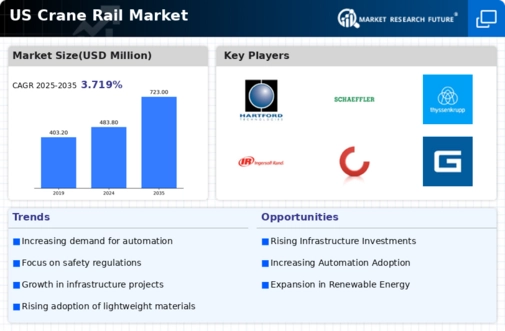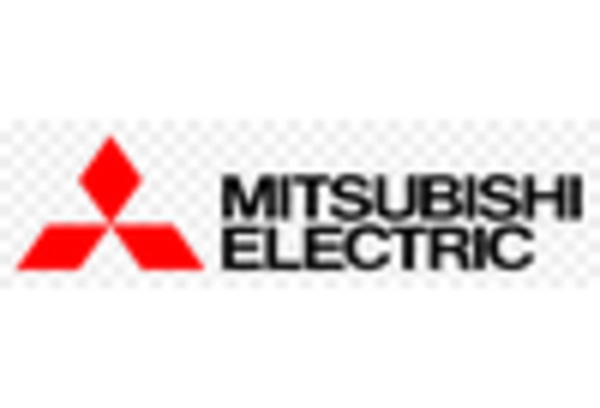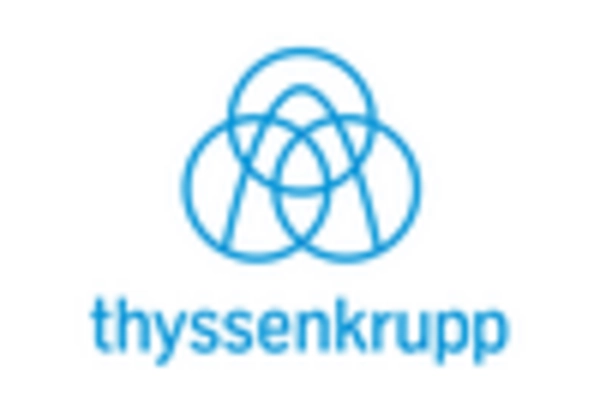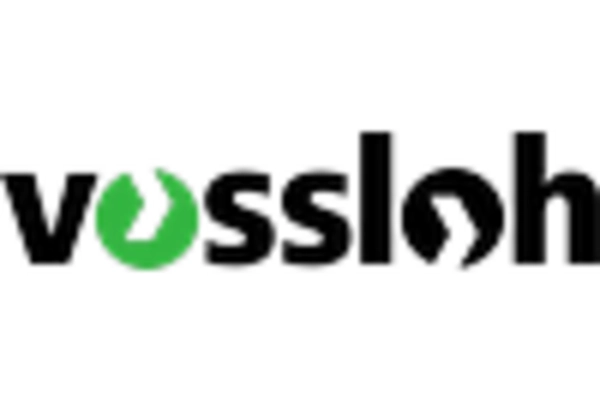The crane rail market is currently characterized by a competitive landscape that is both dynamic and multifaceted. Key growth drivers include the increasing demand for efficient material handling solutions and the ongoing expansion of infrastructure projects across the United States. Major players such as Vossloh AG (Germany), Konecranes (Finland), and Thyssenkrupp AG (Germany) are strategically positioning themselves through innovation and regional expansion. Vossloh AG, for instance, focuses on enhancing its product offerings through technological advancements, while Konecranes emphasizes digital transformation to improve operational efficiency. Thyssenkrupp AG, on the other hand, is actively pursuing partnerships to bolster its market presence, collectively shaping a competitive environment that is increasingly reliant on technological integration and customer-centric solutions.
In terms of business tactics, companies are localizing manufacturing to reduce lead times and optimize supply chains, which appears to be a critical strategy in the current market. The competitive structure of the crane rail market is moderately fragmented, with several key players exerting influence over various segments. This fragmentation allows for a diverse range of offerings, yet the collective strength of these companies fosters a competitive atmosphere that encourages continuous improvement and innovation.
In October 2025, Vossloh AG (Germany) announced a strategic partnership with a leading technology firm to develop smart rail solutions aimed at enhancing operational efficiency. This collaboration is expected to leverage advanced analytics and IoT technologies, positioning Vossloh at the forefront of the digital transformation trend within the crane rail sector. The strategic importance of this move lies in its potential to not only improve product offerings but also to attract a broader customer base seeking innovative solutions.
In September 2025, Konecranes (Finland) launched a new line of electric overhead cranes designed to meet the growing demand for sustainable material handling solutions. This initiative aligns with global sustainability trends and reflects Konecranes' commitment to reducing carbon footprints in industrial operations. The introduction of these cranes is likely to enhance Konecranes' competitive edge by appealing to environmentally conscious customers and industries.
In August 2025, Thyssenkrupp AG (Germany) completed the acquisition of a regional competitor, thereby expanding its market share and enhancing its product portfolio. This acquisition is strategically significant as it allows Thyssenkrupp to integrate new technologies and expertise, further solidifying its position in the crane rail market. The move is indicative of a broader trend where consolidation is being used as a tactic to achieve competitive differentiation.
As of November 2025, current competitive trends in the crane rail market are heavily influenced by digitalization, sustainability, and the integration of AI technologies. Strategic alliances are increasingly shaping the landscape, enabling companies to pool resources and expertise to drive innovation. The shift from price-based competition to a focus on technological advancement and supply chain reliability is evident, suggesting that future competitive differentiation will hinge on the ability to innovate and adapt to changing market demands.

















Leave a Comment